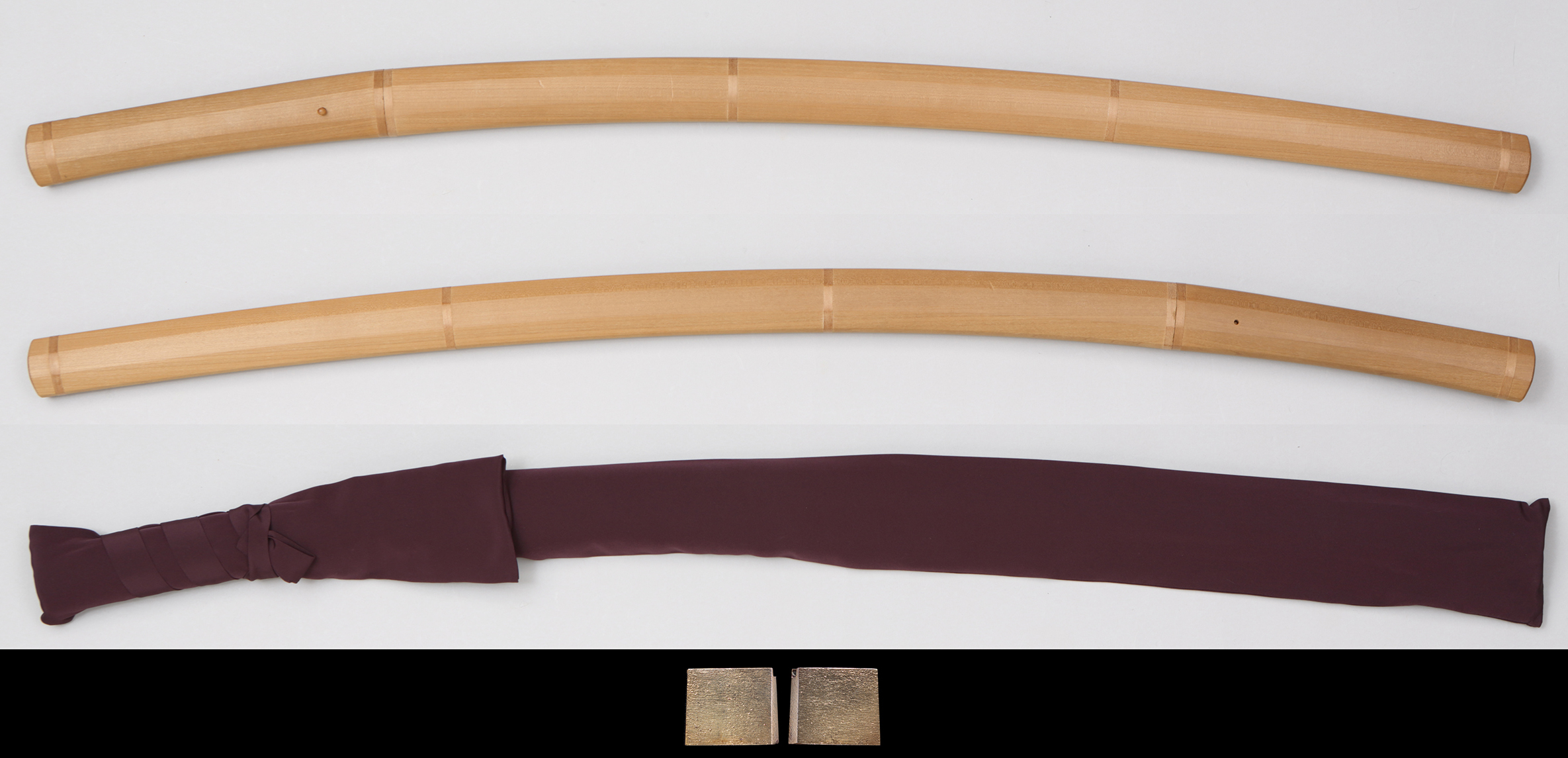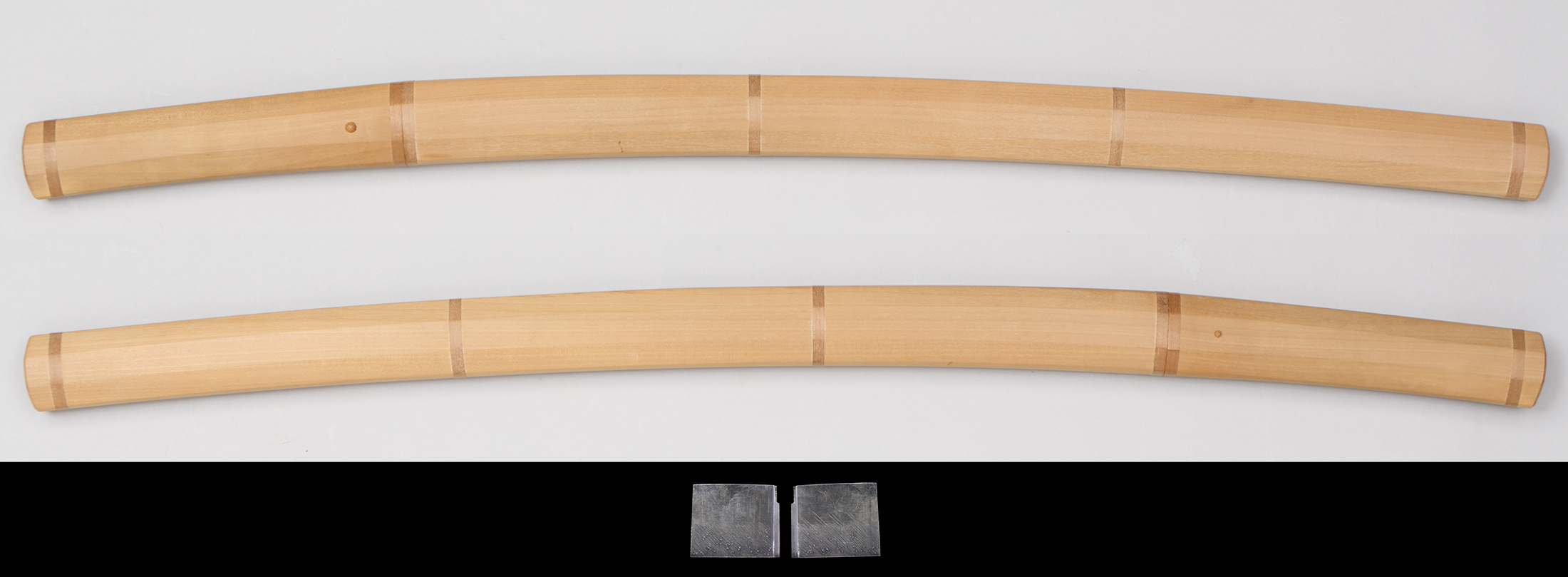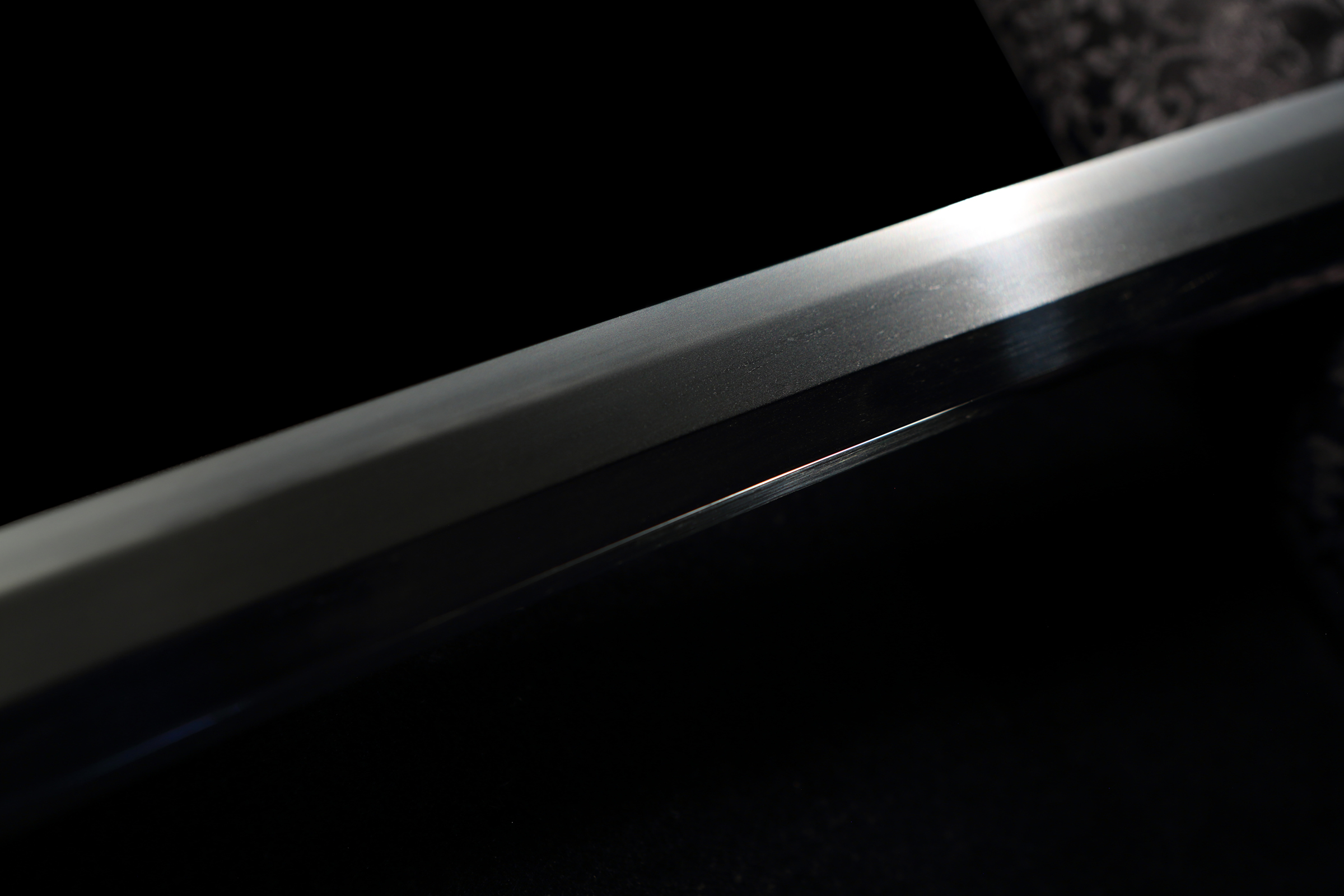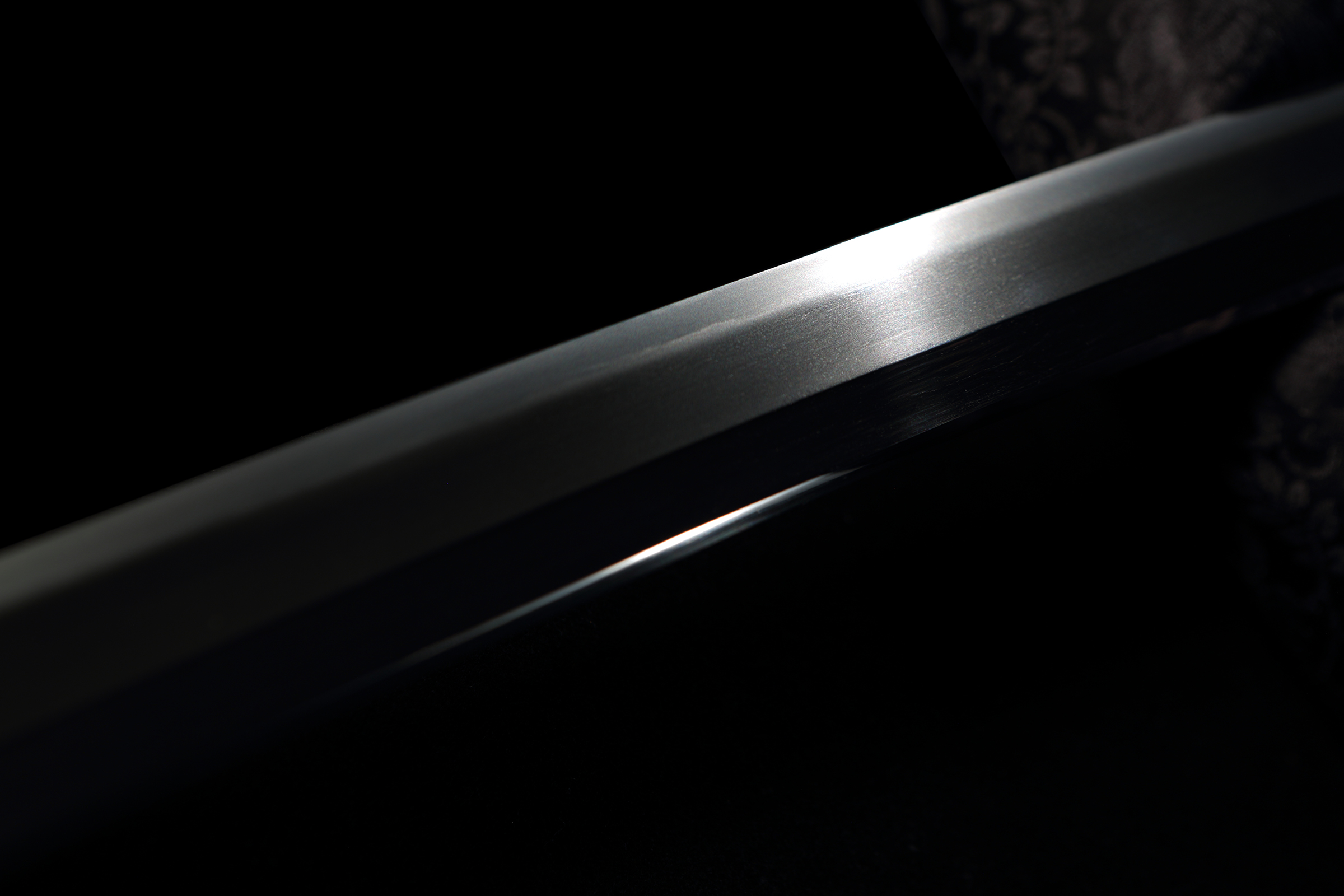
  |
Daisho, Shirasaya |
Nigara Kunitoshi
|
[ Signature ] Katana : omote : "津軽住人国俊造之" ura : "昭和五十年初春" Wakizashi : omote : "津軽住人国俊造之" ura : "昭和二二十八年初春" |
[ Size ] Katana : Blade length 71.9cm (2 shaku 3 sun 7 bu 2 rin), sori 2.2cm (7 bu 2 rin), moto-haba 3.32cm, moto-kasane 0.87cm, saki-haba 2.16 cm, saki-kasane 0.56 cm, mekugi-ana(hole) 1, blade weight 1,047g , shirasaya length 101.5cm Wakizashi : Blade length 52.2.cm (1 shaku 7 sun 1 bu 9 rin), sori 0.9cm (2 bu 9 rin), moto-haba 3.12cm, moto-kasane 0.83cm, saki-haba 2.24 cm, saki-kasane 0.58 cm, mekugi-ana(hole1) 1, blade weight 646g , shirasaya length 99cm |
[ Period ] Katana : Showa"昭和" 50(1975) Wakizashi : Showa "昭和"48(1973) |
[ Province ] Aomori prefecture |
  |
[ Feature ] [ Conditions ] There is one spot on the back of the wakizashi, habaki-moto and one spot on the middle hira-ji flat area where it appears to be buried iron, otherwise excellent. |
[ Attachments ] Katana : Suaka base, gilt, single-layer habaki, shira-saya and shirasaya bag. Wakizashi : Silver single-layer habaki, shira-saya and shira-saya bag. |
  |
[ Item number ] A111123 [ Price ]SOLD |
Please order by E-mail.

About TOUKEN KOMACHI
BACK
TEL +81-(0)3-5284-9014/ FAX +81-(0)3-5284-9043____E-mail : s_tsukada@toukenkomachi.com
Copyright © 2009-2023 Touken komachi All rights reserved. |